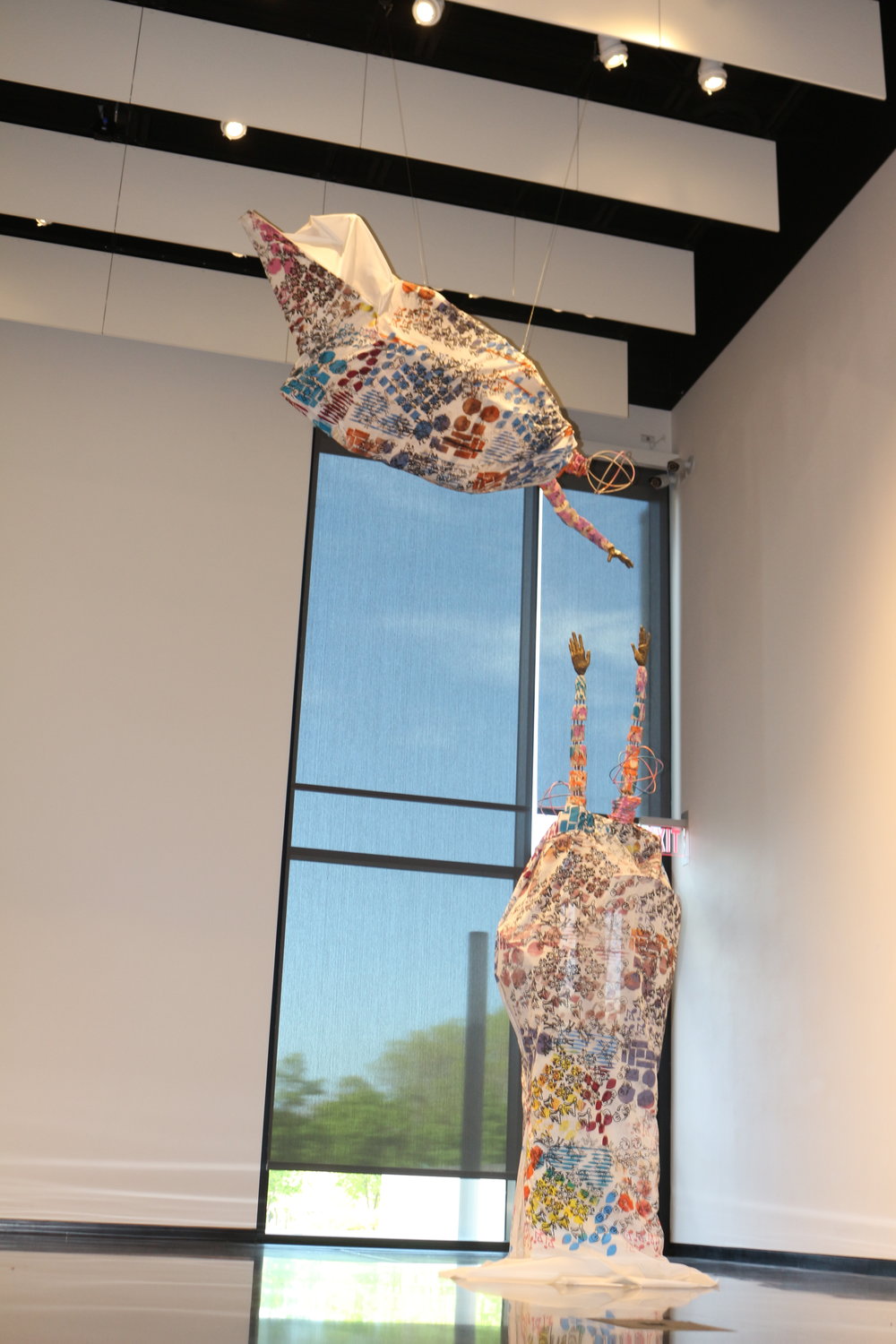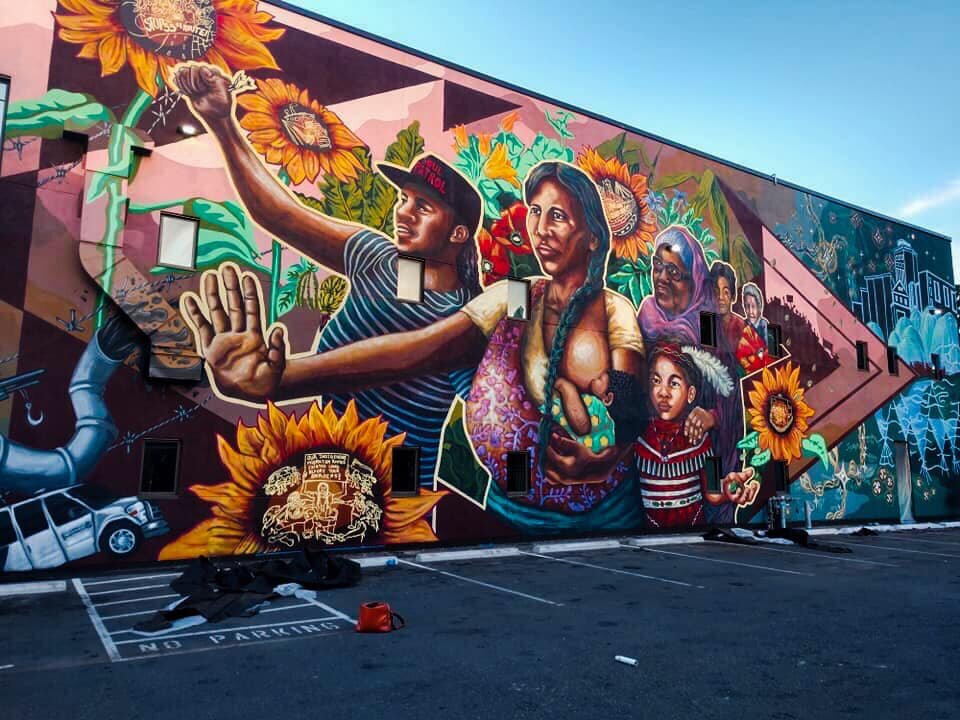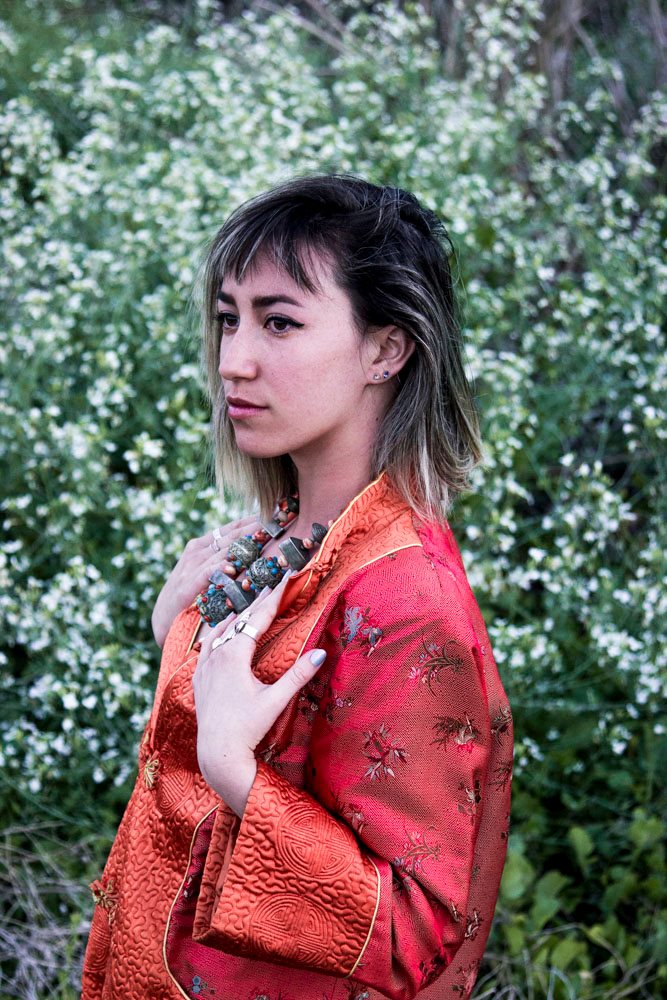Conducted by Meggie Royer, Founder & Editor-in-Chief
1. You are currently a studio assistant at Mosaic On A Stick, a Minnesota arts organization that creates community art and provides community classes. What is it that drew you to mosaic, specifically, as a medium of expression?
My encounter with mosaic art was serendipitous. I discovered Mosaic On A Stick when I wanted to learn about doing community and public art back in 2015. I organized and facilitated my first community art project with a group of teenage girls who I worked with through a nonprofit called the Women’s Initiative for Self-Empowerment. I facilitated a group discussion at the beginning of every workshop, and Lori Greene, the lead artist and owner of the studio, taught us how to do mosaic. Mosaic art can look easy if you’ve never done it, but it’s actually tedious, labor-intensive work that takes a long time to make. Mosaic forces you to slow down, be present, and listen. I think it’s because mosaic is about breaking things, and then taking those broken pieces and transforming them into something new. One piece on its own is just a broken piece, but when organized with all the other broken pieces, it creates rhythm, flow, beauty, and power. Mosaic is about healing.
2. You describe your 2017 multimedia sculpture “Reach” as an “homage to women in your life who are victims of violence, trauma, and physical and psychological abuse.” The women reach toward one another to offer support and comfort. Why do you think the community and solidarity of others is so crucial to healing from trauma?

Reach
I think oftentimes we confuse independence with isolation. Especially when it comes to traumatic events, specifically sexual trauma, the feelings of shame are so overwhelming and the pain cuts so deep that it’s important to never forget the importance of being held. And to allow ourselves to be held. I think it affects our ability to trust other people, but most of all ourselves. Sometimes strength looks like standing alone, but strength is also about the ability to stand in one’s own vulnerability, and ask for help. Accepting help and asking for support is a form of deep bravery. I believe it is also crucial to survival, and we forget that sometimes. Especially as womxn, we’re so conditioned to compete against each other all the time that I feel that it’s an act of resistance to lean on each other for support, hold each other, and just love the hell out of each other as if our lives depended on it. Because in some ways, I think our survival does depend on it.
3. If you could use only one word to describe “Reach,” what would it be?
Trust.
4. Tell us a little bit about “Mural on the Ave,” which you and 12 other artists created over the course of several months this year in the Phillipps neighborhood in Minneapolis. What message does “Mural on the Ave” send to those who view it?

"Mural on the Ave"
“Mural On the Ave” is about honoring the political and cultural history of the Phillips neighborhood- a neighborhood built on Dakota and Anishinaabe land, home of immigrants from Somalia, Vietnam, Mexico, Ecuador, Laos, and other countries who were historically impacted by war and turmoil. Phillips is home to the American Indian Movement (AIM), and home to activist communities and families who organize to fight against oppression, displacement and racism for present and future generations. Phillips is made up of 80% people of color and the city planted several factories in this small neighborhood, causing severe health problems for its residents as well as poisoning the air and soil with toxins. The neighborhood itself has seen its own history of violence and struggle, but its transformation has always been because of the resilience and organizing of its residents who fought, and continue to fight for policy changes and justice. It is about maintaining the spirit of this neighborhood for the people who live there, and combatting forces of gentrification and displacement. We recently gave it the official title, “Defend, Grow, Nurture Phillips.”
5. This particular issue of our magazine surrounds the theme of domestic violence. Unfortunately, survivors are often mistakenly told that the only way to heal is to forgive their abuser. If we may ask, how do you think forgiveness fits into one’s healing journey, if at all?
That is a really good question. I recently heard some advice from a friend about forgiveness. He told me that there’s a difference between recognizing an abuser for their humanity and their right as a human being to receive love and healing, and feeling that you as the victim have the responsibility to love them. I heard this advice from a Minneapolis-based artist named Ricardo Levins Morales (who heard this advice from another source), who does a lot of healing, trauma, and resilience-based training. For me, hearing this advice helped me intellectually understand what forgiveness can mean, in order to create a framework to process the complex emotions of trauma and forgiveness. In this case, I think forgiveness is about learning how to let go of resentment in order for the process of healing to take place. I think there is power in saying: I see that you hurt me because something inside you is hurting. I see that you have wounds, and I see your humanity. I hope you are able to heal from your wounds and find sources of love to support you. But your wounds are not mine to heal. And I will not be the one to give you my energy or my love.
As we know, we cannot properly forgive or love others until we love and forgive ourselves first. But self-love is also about developing boundaries. And love is a practice that has many forms. I think separating the idea how someone is deserving of love, from the responsibility of being the one to love them is key in the process of forgiveness.
Juliette Myers is a queer, mixed-race Chinese-american artist who works primarily in mosaic and painting to create public, collaborative, and community art projects rooted in social change. She has lived in the Twin Cities for 6 years and uses art as a therapeutic language for connection, growth, and political expression. More of Juliette's artwork can be found here.